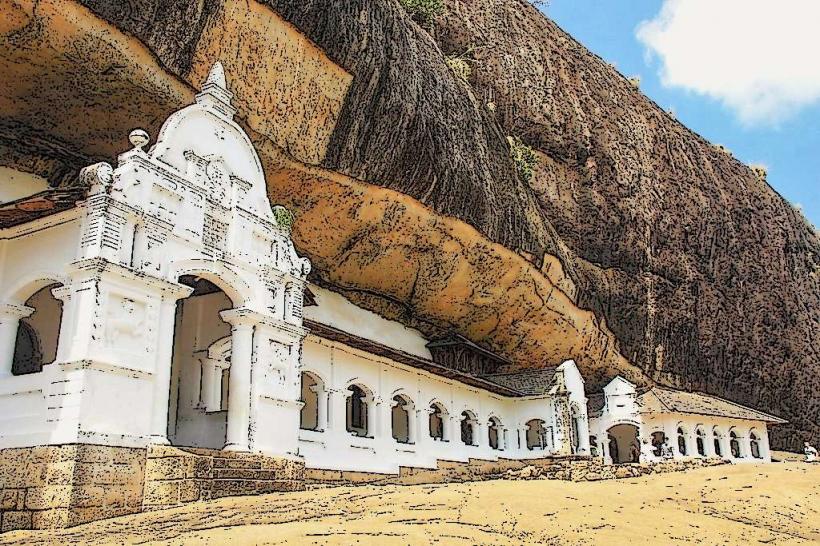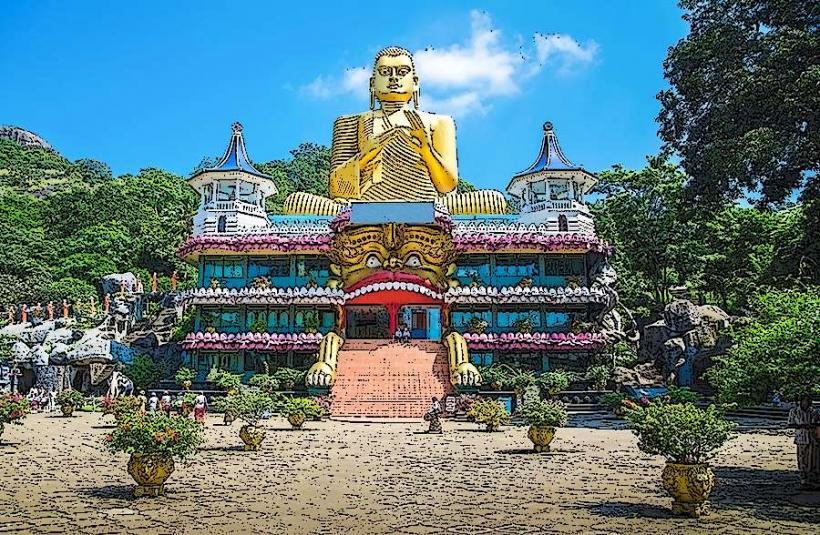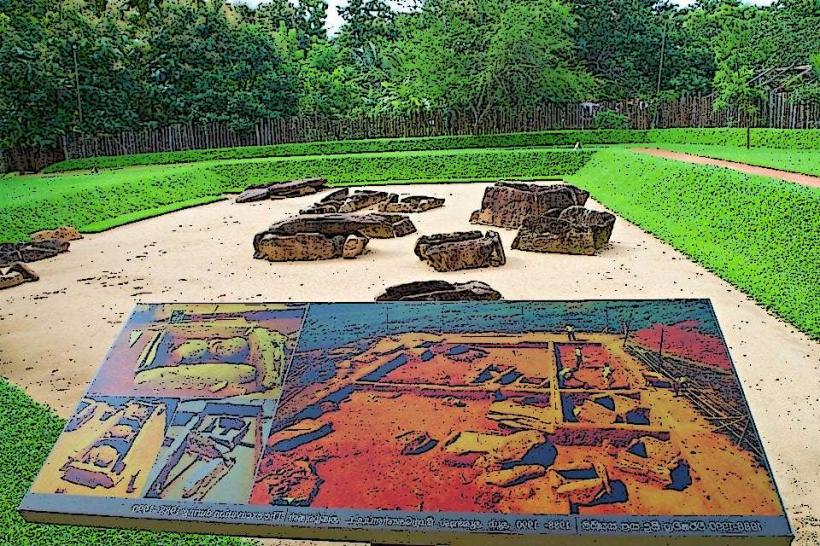Information
City: DambullaCountry: Sri Lanka
Continent: Asia
Dambulla, Sri Lanka, Asia
Overview
Dambulla, home to Sri Lanka’s famed Golden Temple, sits in the island’s heart and stands among its most treasured cultural and historical landmarks, moreover dambulla draws travelers with its ancient cave temples, vivid frescoes that still glow in the dim light, and deep spiritual significance for those who seek history, art, and faith.Dambulla sits in Sri Lanka’s central Matale District, about 148 kilometers north of bustling Colombo and 72 kilometers from Kandy, resting at an elevation of 340 meters where the air feels a touch cooler, as well as the climate is tropical, swinging between dry months from November to April-perfect for exploring sunlit temples-and wetter days from May to October, when rain drums softly on the roofs.For more than two millennia, this setting has stood as a sacred hub of worship, subsequently it rose to prominence in the 1st century BCE, when King Vattagamani Abhaya, forced to flee his besieged capital, found shelter in these cool, shadowed caves, moderately Centuries later, the caves echoed with Buddhist chants and the stillness of meditation; the Dambulla Cave Temple Complex took shape over generations, especially during the Anuradhapura and Polonnaruwa eras, and in 1991 UNESCO honored it as a World Heritage Site for its extraordinary preservation and the deep cultural value of its ancient temples, moreover the Dambulla Cave Temple, also called the Golden Temple, is a cluster of five ancient caves once used by Buddhist monks as quiet retreats and sacred shrines, their walls still painted with faded images of the Buddha.The site holds more than 150 Buddha statues, vivid frescoes, and finely detailed carvings, simultaneously among its Five Caves, Cave 1, the King’s Cave, is the largest-home to a 15-meter reclining Buddha that seems to breathe in the dim light.Cave 2, the Temple of the Great King, brims with towering murals and figures of the Buddha and other beings, consequently in Cave 3, the modern Temple, statues of deities stand alongside smaller Buddhas.Cave 4, the Royal Cave, glows with paintings of the Buddha’s life and radiant celestial forms, while Cave 5, the White Temple, displays a quiet gallery of Buddhist paintings and carvings, while across the complex, walls bloom with frescoes showing the Buddha’s life, mythic tales, and moments from Sri Lanka’s spiritual history, covering more than 2,000 square meters and ranking among the island’s best-preserved ancient artworks.To be honest, At the foot of the temple, a massive golden Buddha rises, gleaming in the sun as Dambulla’s enduring symbol, at the same time rising more than 14 meters, the statue towers above the courtyard and ranks among the largest of its kind in Sri Lanka; nearby, the Dambulla Cave Temple Museum displays weathered relics, delicate carvings, and centuries-heritage artifacts linked to the cave complex and Buddhist history.About 5 kilometers away, the Ibbankatuwa Megalithic Tombs hold over a hundred ancient stone graves, some more than 2,000 years classical, while the calm waters of the Rangiri Dambulla Reservoir shimmer beside the caves, then the reservoir frames the hills and plains in shimmering blue, making it a peaceful area to sit back and breathe in the still air.Dambulla holds deep religious meaning for Sri Lankan Buddhists, its cave temples alive with worship and meditation for over two thousand years, after that the Dambulla Cave Temple ranks among the country’s most revered pilgrimage sites, drawing both locals and travelers from far corners of the world.Inside, intricate murals and centuries-vintage statues reflect a cultural tapestry woven from Indian, Southeast Asian, and Buddhist influences, on top of that visitors can wander through the caves, pausing to trace painted lotus blooms on the walls, or hike up the slope for sweeping views of the plains and distant mountains.Photographers capture the play of light on ancient stone and gold-leaf Buddhas, while guided cultural tours unravel the temple’s layered history, after that pilgrims still kneel before the statues to offer flowers and prayers.To get here, travelers can drive or take a bus-about four hours from Colombo, two from Kandy-or catch a train to Habarana, 15 kilometers away, then hop in a tuk-tuk, and around town, tuk-tuks remain the go-to ride, though walking or cycling works well for nearby sights.From December to April, dry skies make hiking and exploring most comfortable; the rainy months bring quieter paths and a softer temple hush, moreover close by, Sigiriya’s towering rock fortress rises just 15 kilometers away, Polonnaruwa’s ancient ruins whisper of kings past, and Minneriya’s plains host the famed elephant gathering.As it turns out, The steep climb to the cave temples may test your legs, but the view-and the sense of history-makes every step worth it, and wear comfortable shoes and carry a bottle of water.Because the frescoes are centuries historic and fragile, parts of the temple are often closed for preservation or hidden behind scaffolding, then the Dambulla Cave Temple, Sri Lanka’s largest and best-kept cave complex, holds treasures like the Golden Buddha statue-finished in 2000 and gleaming in countless photographs.Somehow, Inside, vivid murals tell stories of the Buddha’s life and the reigns of Sri Lanka’s kings, as well as here, you can step into a venue where ancient art, sacred history, and quiet air weave a rare glimpse into the island’s soul.
Author: Tourist Landmarks
Date: 2025-10-29
Landmarks in dambulla




